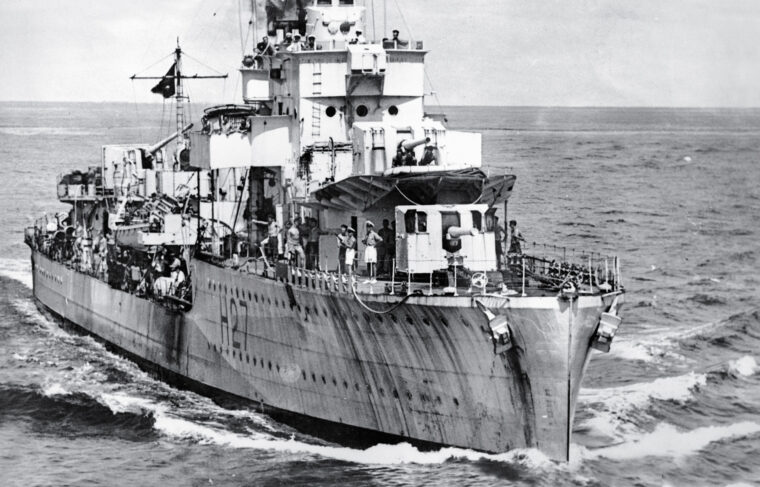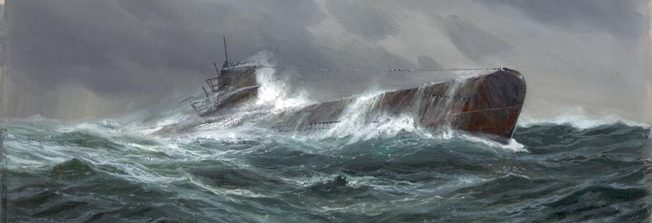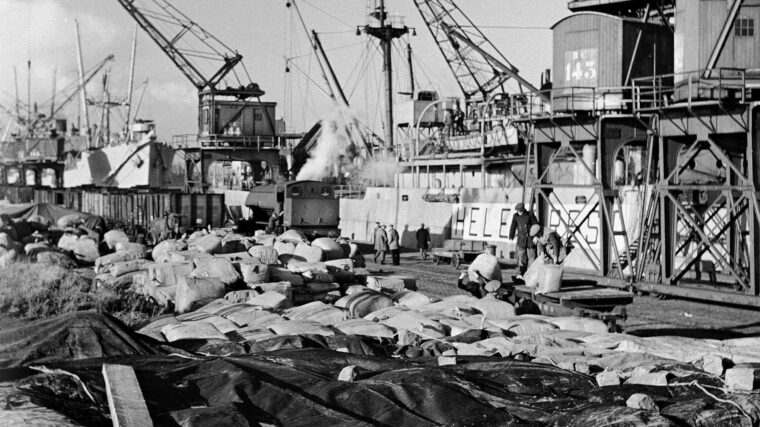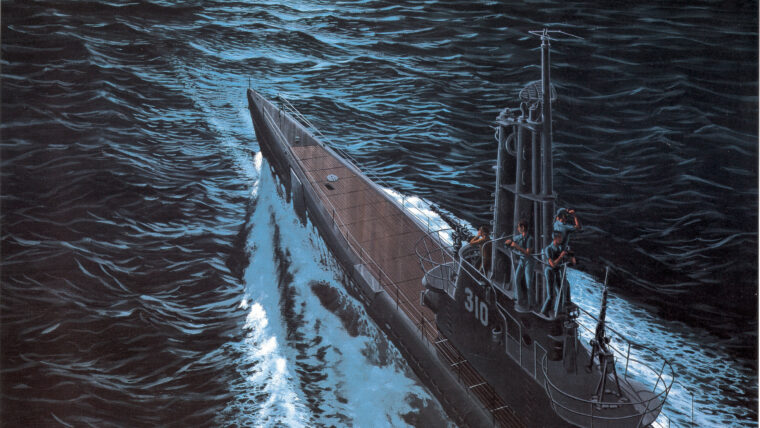
Battle of the Atlantic
Famous Navy Ships: The HMS Electra
By Glenn BarnettWar clouds gathered rapidly once Germany invaded Poland on September 1, 1939. Allied demands that Hitler withdraw his armies went unheeded. Read more

Battle of the Atlantic
War clouds gathered rapidly once Germany invaded Poland on September 1, 1939. Allied demands that Hitler withdraw his armies went unheeded. Read more

Battle of the Atlantic
Built in the mid-1930s as one of the famed Treasury class of large U.S. Coast Guard cutters, USCGC Taney had a distinguished career spanning five decades of continuous service. Read more

Battle of the Atlantic
On this writer’s desk sits a small, pewter mug, dented and somewhat bat-tered. It is neatly engraved, and the lettering reads: “Wardroom H.M.S. Read more

Battle of the Atlantic
Through the first half of World War II, Allied shipping losses to German U-boats climbed steadily from over 400,000 tons in the last four months of 1939 to more than two million tons each in 1940 and 1941, before reaching a staggering 6,266,215 tons in 1942 following the entry of the United States into the war. Read more

Battle of the Atlantic
The late summer of 1939 saw Great Britain teetering on the brink of war with Hitler’s Germany. The years of appeasement and vacillation, of meekly acquiescing to Hitler’s insatiable territorial demands, were over at last. Read more

Battle of the Atlantic
They have been called “the other Navy,” the “Navy’s stepchildren,” and perhaps most fittingly, “the forgotten Navy.” Officially, however, they were the Naval Armed Guard or more simply the Armed Guard (AG). Read more

Battle of the Atlantic
The concept of a ship that could submerge beneath the water and then resurface dates back as far as the late 1400s, when Italian Renaissance artist and inventor Leonardo da Vinci claimed to have found a method for a ship to remain submerged for a protracted period of time. Read more

Battle of the Atlantic
Ungainly, slow, and lacking armor, the escort carriers of the American and British navies were the versatile, unsung workhorses of the second half of World War II. Read more

Battle of the Atlantic
In the summer of 1940, the world watched with rapt attention as the citizens, airmen, sailors, and soldiers of Great Britain steeled themselves for imminent invasion by the victorious German Army. Read more

Battle of the Atlantic
Joseph A. Gainard, captain of the American freighter City of Flint, hated to threaten his crew with piracy; the men were only reacting as any sailors would to the seizure of their ship by a foreign power. Read more

Battle of the Atlantic
“We won because we smothered the enemy in an avalanche of production, the like of which he had never seen, nor dreamed possible.” Read more

Battle of the Atlantic
(Scott McGaugh, Da Capo Press, Boston, 2016, 257 pp., Read more

Battle of the Atlantic
The Battle of the Atlantic was a life-and-death struggle between the German Kriegsmarine and the Allied navies that was fought for control of Britain’s lifeline to its empire and to the United States. Read more

Battle of the Atlantic
The Time magazine article was titled “It Flies!” It was a note of triumph and vindication, but also an epitaph, of an aircraft that was five years in the making—the “Spruce Goose,” a plane that should not have existed. Read more

Battle of the Atlantic
After the war in Europe was won, General Dwight D. Eisenhower had many opportunities to review various campaigns with the leaders of the Soviet Army–– including even Joseph Stalin himself. Read more

Battle of the Atlantic
Because the victorious Allies had destroyed Imperial Germany’s fleet after World War I, Adolf Hitler had no choice but to construct a new navy after he came to power. Read more

Battle of the Atlantic
British Prime Minister Winston Churchill, who rode in a cavalry charge in the Sudan in 1898, escaped from the Boers in 1899 and served for six months as a troop leader in the Western Front trenches in 1915-1916, remarked during World War II, “The only thing that ever really frightened me during the war was the U-boat peril.” Read more

Battle of the Atlantic
After refueling in the mid-Atlantic and suffering bow damage from being rammed by a tanker, a 769-ton German submarine reached its destination, the American East Coast, early on Monday, May 4, 1942. Read more

Battle of the Atlantic
The year 1944 dawned with America already at war for over two years. In an event not marked by history books, the 96th Navy Construction Battalion, Seabees, crossed the Atlantic from Davisville, Rhode Island, on the Abraham Lincoln, a converted banana boat escorted by two destroyers, the USS Ellis and USS Biddle. Read more

Battle of the Atlantic
She was a sleek, efficient, deadly killer, a home to six officers and 60 enlisted men, and a holy terror to the enemy. Read more